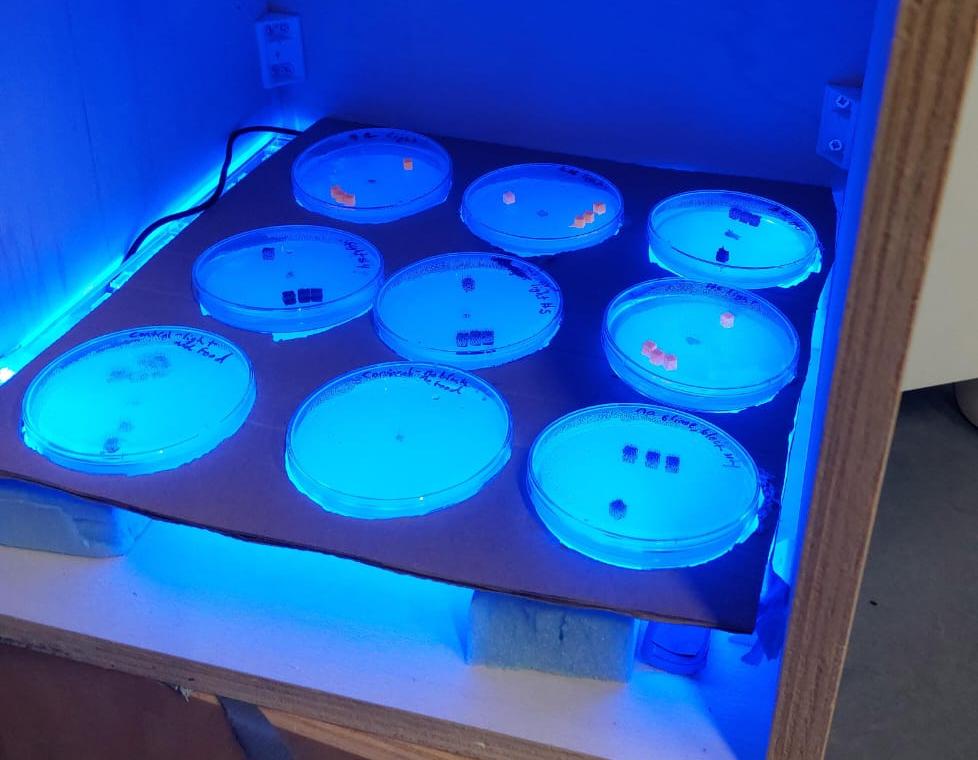
— Written by Milica Milosevic & Amanda Putti —
Considering the slime craze of 2016, we’re pretty sure we have all played with slime – or at least know what it is. Have you ever heard of slime molds though? Slime molds, scientifically referred to as Physarum polycephalum, are a type of single-celled protist that is aneural (lacks a brain)! They move through shifting their cytoplasm back and forth in a movement known as “shuttle streaming”. In just 24 hours, we can observe the slime mold go from a single dot to a yellow slime spread throughout an agar dish!
Slime molds have been a subject of interest to neuroscientists because of their ability to perform behaviors, move through mazes, and preferentially move towards food sources. This means we can change conditions slime molds grow in to test for the decision (or lack of decisions) they makes. This research could eventually lead to insights about human behavior and cognition and lead us to have a better understanding of decision making.
What Our Project is About
One week in, our project is going pretty well! Our first step was to start growing the slime mold on an agar plate from a dormant phase it was transferred here in. Slime molds prefer to grow in warmer, humid temperatures (summer in Belgrade was perfect for this) and in the dark. They eat nutrients on oats. Pictured below is the first plate of slime molds we grew!

We’re right at the stage where we’re starting to collect our data.
Using a camera that takes a photo every minute, we are hoping to create a time lapse of slime mold growth towards an object – specifically, towards 3D printed cubes representing the mechanical stimulus.
Since they cannot grow in light, and we had to make our molds visible in photos, we made an installation using LED blue lights. This allows us to see the molds, hopefully without interfering with their growth. To check and rule out that possibility, we set the three Petri dishes in the dark, where they should grow just fine.
In our setup under the blue light, we also have some control dishes. One is just mold growing with nutrients to allow for positive control for the blue light. The second is mold growing without nutrients or mechanical stimuli to test if there is a directed movement that isn’t an answer to stimulus.
Finally, the third dish contains just 3D printed cubes with no molds. Its purpose is sterilization control – if we get a contamination, this dish shows us if we got it from the cubes.

We also created a DIY agar plate made out of unflavored jello! As unconventional as this is, we want to see if slime molds will grow on this. (See top picture!) The goal would be to share this protocol so that anyone with access to a grocery store and a microwave could grow slime molds. This would make research and science learning more accessible to students.
Next Steps
Our plan over the next few weeks is to set up a lot of different experiments with the slime molds. This includes potentially changing the mechanical disruption to slime molds, creating a maze for the slime to go through, and tracking electrical activity. We’ll check back in at the end of the fellowship to share what we found out!
Who We Are
Amanda
I just graduated from the University of Michigan with a degree in Neuroscience. Throughout college, I worked in a lab studying pulmonary fibrosis through working with human lung epithelial cells. In the fall, I will be starting a research fellowship at the National Institute of Health studying the structural biology of a lipid membrane protein associated with antibiotic resistance. I’m excited to spend my last summer of freedom with BYB in Belgrade, Serbia, and have the opportunity to collaborate with Serbian students and learn more about neuroscience. Outside of the lab, I enjoy running, (attempting) to cook, and traveling.
Milica
I am very excited I got the opportunity to work with BYB on this summer research project! I am a third year student on Molecular biology at University of Belgrade and my special interests in science are biophysics and molecular genetics. My love for science began when I was a participant in a biology seminar at science center Petnica in high school. That is where I got the chance to work on my first project, which included stressing out millipedes, and then, when they tried to defend themselves from me, I collected their toxin and used it against bacteria!
Now, when I am in college, I am an assistant in the science center, introducing the scientific method and lab experience to highschoolers, and helping them fall in love with science just like I did.
I am also a science communicator at the CPN (Center for Promotion of Science in Belgrade), so I guess you can see the pattern in the need for showing people of all kinds of interests, age and educational status how cool science is!